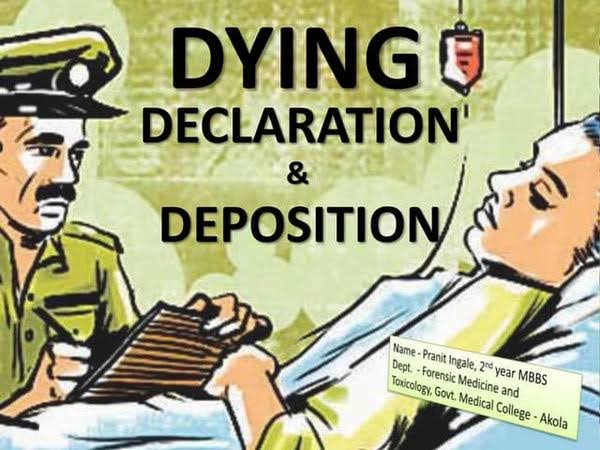K.S. Gupta, J.@mdashThis order will govern the disposal of Crl.M.(M) 3871/2001 filed by Mohan Lal Thapar, Crl.M.(M) 3855/2001 filed by Gagan Thapar And Crl.M.(M) 3852/2001 filed by Kuldeep Thapar seeking regular bail. The petitioners-accused are jointly facing trial in a complaint filed by Y.P. Dabara, Inspector, New Customs. House u/s 135 of the Customs Act, 1962 (for short the ''Act'').
2. Submission advanced by Sh. D.C. Mathur for petitioners is said Crl.M.(M) Nos. 3871/2001 and 3855/2001 which was also adopted by Sh. Harjinder Singh for petitioner in Crl. M.(M) 3852/2001, was that the offence for which compliant has been filed, admittedly is punishable with imprisonment for a term which may extend to 3 years or with fine or with both. Such an offence is governed by the third and not second entry in Table II of the First Schedule appended to Code of Criminal Procedure, 1973, offence being not punishable for a clear period of 3 years. Reliance was placed on the decision in Rajeev Chaudhary v. State (NCT) of Delhi, 2001 SCC (Cri) 819. To appreciate the said submission, it is necessary to reproduce Table II dealing with classification of offences against other laws:-
Offence Cognizable or not Bailable or not By What court triable if punishable with death Cognizable Non-bailable Court of imprisonment for life, Sessions or imprisonment for more than 7 years. If punishable with Ditto Ditto Magistrate Imprisonment for 3 years of the upwards but not more than First Class 7 years. If Punishable with imprison- Non-cognizable Bailable Any ment for less than 3 Magistrate years or with fine only.
3. Table I of the First Schedule deals with classification of offences under IPC. Phraseology similar to that in Table II, has been used in Table I. By was of illustration entry made in Table I in regard to offence punishable u/s 379 IPC is extracted below:-
Theft Imprisonment for 3 years Cognizable Non-bailable Any or fine or both Magistrate
4. Punishment provided u/s 379 IPC is imprisonment of either description for a term which may extend to three years or with fine or with both. To be noted that the offence for which complaint has been filed against the petitioners, is also punishable with similar imprisonment which may extend to three years or with fineor with both u/s 135(1)(ii) of the Act. Controversy at hand mainly revolves around the interpretation and construction of the word ''for'' as used in the entries against the column of ''offence'' in he Table .Word ''for'' used before the term of sentence of imprisonment in Table I if read with corresponding sections providing punishment, would clearly indicate that it refers to the term of sentence of imprisonment which may extend up to the period of punishment provided for theoffence(s). Thus, the word ''for'' occurring before the words ''3 years and upwards but not less than 7 years'' in said second entry in Table II would include the offences under other laws wherein punishment may extend up to 3years. The offences for which punishment provided may into up to 3 years, only will be governed by third entry in Table II. In Rjaeev Chaudharys'' case (supra) the question involved before the Supreme Court was in regard to interpretation and construction of the expression'' offences punishable with imprisonment for a term of not less than 10 years'' occurring in proviso (a) to Section167(2) Cr.P.C. in context of expression'' imprisonment which may extend to 10 years'' occurring in Section 386IPC. Ratio of this decision is that for an offence u/s 386 the detention of an accused in custody can be permitted up to a maximum period of 60 and not 90 days u/s 167(2) Cr.P.C. It is settled law that the decision of Supreme Court is only an authority for what is actually decided and not what logically follows from it. Thus ,I am unable to agree with the submission advanced on behalf of petitioners that offence under said Section135(1)(ii) of the Act would fall under third entry in Table II which has been made bailable.
5. It was next argued on behalf of petitioners that the bail granted to petitioners up to the period they were taken into custody on 12th October 2001 by the Additional Chief Metropolitan Magistrate, New Delhi was regular bail. Along with petition being Crl.M.(M) 3871/2001 the extract of order sheets(at pages 61 to 67) of ACMM, New Delhi before whom the complaint is pending form 23rd February2001 to 12th October 2001 has bene filed. It seems that pursuant to summons, Mohan Lal Thapar, petitioner accusedNo. 1 put in appearance on 29th May 2001 and he filed application for grant of bail and at the request of SPP for time to file reply, he was admitted to interim bail up to 2nd June 2001 on furnishing personal bond in the sum of Rs. 1 lac with one surety in like amount. This interimbail continued to operate uptil 12th October 2001. GaganThapar, petitioner-accused No. 2 who put in appearance on21st July 2001, on bail application being moved was admitted to interim bail on furnishing bail bond in the said sum which interim bail continued uptil 12th October2001. Kuldeep Thapar, petitioner-accused No. 3 appeared on2nd June 2001 and on his bail application he was admitted to interim bail on furnishing personal bond in the said amount which interim bail continued up to 12th October2001. Interim bail up to this period was not granted on merits .Therefore, I am unable to agree with the said submission advanced on behalf of petitioners that the bail granted to the petitioners by ACMM, New Delhi was regular. To be noted that by the order dated 12th October 2001 the bail was declined to all the three petitioners and they were ordered to be taken into judicial custody.
6. On merits, it was, lastly, urged that petitioners can even be let off by imposing fine u/s 135(1)(ii) of the Act and, Therefore, they deserve to be released on bail. Copy of complaint filed against the petitioners is placed at pages 17 to 56 in Crl.M.(M)3871/2001. Department alleges therein the involvement of all the petitioners in evasion of customs duty worth crores of rupees by them. In the facts and circumstances of case, I am of the view that it is not a fit case for admitting the petitioners on bail.
7. Consequently, Crl.M.(M) Nos. 3871/2001, 3855/2001and Crl.M.(M) 3852/2001 are dismissed.

